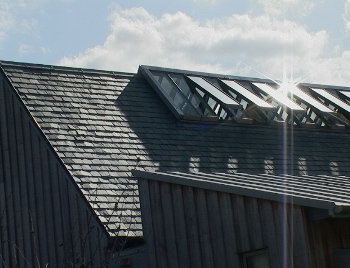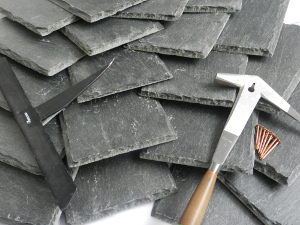What is ‘Phyllite’ Slate?
Welcome to the Rolls Royce of Natural Stone.
Phyllite slate is:
- Harder
- Denser
- Stronger
After a few hundred million years of heat and pressure, sediments become shale, and shale becomes slate. Let the process continue, and slate becomes phyllite. At each stage, the stone gets harder, denser and stronger.
This progression is summarised below:
Sediments → shale → slate → phyllite
Phyllite represents a slightly higher temperature and pressure environment than slate. Within the phyllite, the clay breaks down and recrystallizes to produce stable minerals under these new conditions. Specifically, the clay of the slate breaks down and undergoes a reorganization to produce mica. The mica grains are very small, too small to be seen by the unaided eye, but large enough to effect the luster of the rock. Phyllites have what is known as a “phyllitic sheen”. This is a satin-like luster helps to distinguish phyllite from slate in the field.

Natural Phyllite’s satin like luster helps to distinguish it from slate
On its way to becoming phyllite, “phyllite slate” represents a rare ideal: It combines slate’s distinctive cleavability and riven texture, with phyllite’s superior performance.
Commercially accessible phyllite is rare — there are only a handful of sourced known worldwide.
SSQ’s Riverstone is one of those few available.
Suitable for roofing, flooring, cladding and slabs, it is a product that will add natural beauty to any structure. For more information on this product we have dedicated an entire section to this exciting product.

